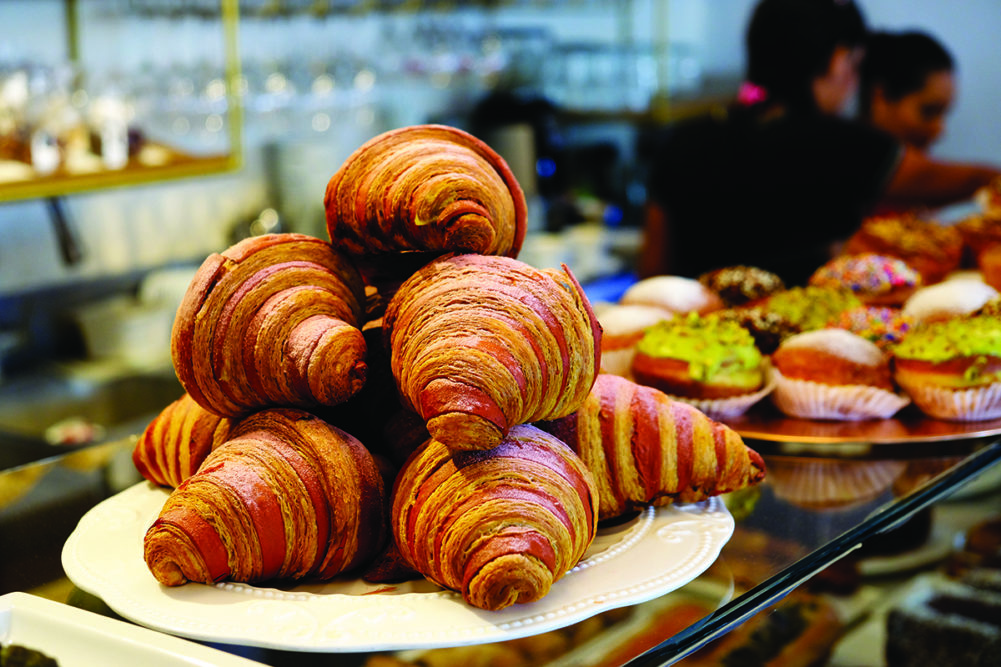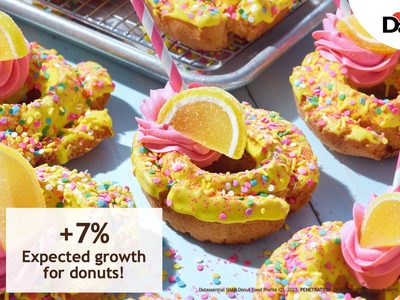The U.S. Department of Agriculture (USDA) estimates that food allergies affect about 2% of adults and 4-8% of children in the United States. Although that’s a niche market, “free-from” claims can appeal to consumers both with and without allergies or intolerances to specific foods, especially gluten-free products. There is also growing demand for “animal-free” foods, with 52% of global consumers considering themselves flexitarian, incorporating plant-based or alternative proteins into their diet along with animal-based proteins. Of those consumers, nearly two-thirds are defining their eating style as “trying to consume more plant-based foods” across categories, including baked goods.
These shifts in eating behaviors are aligned with the global trend of Proactive Personalization, in which people are prioritizing their unique differences in their approach to wellness. Research finds 63% of global consumers say they are interested in foods and beverages that are customized to meet their individual nutritional needs2. Product developers are charged to create elevated eating experiences to not only equal but also exceed that of traditional offerings so consumers can treat themselves without having to make sacrifices in flavor, texture or variety.
Gluten-Free
Consumer interest in gluten-free foods continues to expand. The global gluten-free bakery market size is expected to reach USD 4.15 billion by 2030, registering a compound annual growth rate (CAGR) of 10.8% over the forecast period3. To help meet this need, bakers can turn to certain ancient grains, gluten-free flours or resistant starches in place of wheat, rye and barley. Alternatives include flours from ancient grains like quinoa, millet, buckwheat, chia, hemp, teff and amaranth, as well as bean and pulse powders such as chickpeas, navy beans and red lentils.
Removing gluten from bakery formulations is usually more complicated than a one-to-one substitution; however, bakers should be careful not to adjust too many elements at once. Technical experts recommend singling out individual components, considering the goals of the final product and selecting solutions that will enhance synergies in taste, texture and functionality. For example, product developers may have to overcome a dry texture in gluten-free bread, extra density in gluten-free cakes and brittleness in gluten-free cookies. Hydrocolloids and emulsifiers can help improve texture, mouthfeel and build back structure in gluten-free offerings. Other common challenges are differences in taste or odor, as some ancient grains have bold, earthy flavors that can present as off-notes in certain applications. Complementary ingredients like taste modulators and flavor enhancers can help minimize bitterness or other less desirable characteristics. Furthermore, high-quality ingredients with neutral flavor and color profiles typically require fewer formulation modifications.
ADM’s HarvestEdge™ Gold sorghum is an excellent choice for multiple gluten-free baked goods, with a nutty flavor and light color. It’s also non-GMO and processed in our verified carbon-neutral and certified gluten-free mill in Dodge City, Kansas. Sorghum is a wholesome ancient grain that has low use of water and fertilizer with a smaller carbon footprint compared to wheat4. Sorghum provides a neutral base that can enhance the chewy texture in a variety of sweet and savory gluten-free products. Plus, toasting white sorghum more closely mimics the taste of wheat flour, if that is preferred for the final application.
Dairy-Free
Dairy-free foods and beverages are typically aimed toward lactose-intolerant individuals or people allergic to milk protein, such as caseinates or whey protein. Dairy-free can also appeal to vegans, vegetarians and flexitarians, and those following certain types of kosher restrictions. As an alternative to milk and cream, soy, pea and wheat proteins can provide a neutral starting point in terms of taste and color. Pea protein is particularly beneficial as it’s inherently non-GMO and helps mitigate the need for mandatory allergen labeling. Pea, soy and wheat proteins also provide comparable functionality to dairy proteins, creating a satiny-smooth finish. Milk-type flavors, taste modulation and masking flavors may also be included to enhance the perception of creaminess in scones, bars, cupcakes and more.
Another approach to improve sensory appeal is to combine plant proteins. This technique also enhances protein diversity and increases protein quality, achieving higher protein digestibility-corrected amino acid scores (PDCAAS) than these protein sources could provide individually. Our MaxFlex™ systems, for instance, deliver increased protein levels with blends of pea and wheat proteins, or pea and rice proteins. With this combination of plant proteins, formulators are able to select key functional attributes to optimize the end result. Specifically, our MaxFlex™ pea and wheat blend is exceptional for high-protein cookies, pancakes and pizza dough, among other bakery and cereal applications, providing key attributes such as dough expansion, browning, texture and appearance.
Egg-Free
Though the number of consumers with an egg allergy is quite small, the plant consumer market is growing and so is the need for products formulated without egg proteins. High-gel protein isolates and concentrates are useful alternatives to eggs, delivering functionality like aeration and binding. Plant proteins, such as soy or pea protein isolates, also can be used to replace eggs, providing essential whipping, aeration and binding properties to create delicate egg-free macarons, fluffy chiffon cakes and melt-in-your-mouth meringues.
In some cases, bakers may want to develop breads and sweets that address multiple allergen sensitivities. Chia meal, as an example, can be used to omit wheat, milk and eggs without losing binding or emulsification properties, creating a batch of vegan, gluten-free and dairy-free muffins or brownies. Shoppers are increasingly interested in “free-from” options that include multiple better-for-you claims like these.
As lifestyle trends like keto and paleo diets continue to take hold, and as more consumers take steps to address food sensitivities or health concerns, the need for inclusivity on store shelves is more prevalent than ever. Product developers can increase accessibility to “free-from” baked goods by revising their approach to common allergens like gluten, dairy and eggs. With the support of a partner that understands each component of an application and provides a portfolio of quality alternative protein sources, complementary ingredients and formulation techniques, bakery brands will be able to create delicious offerings that rival their traditional counterparts. Ideally, “free-from” treats will do more than just meet consumer needs – they’ll become the baked goods that consumers will crave.
Paula LaBine is the marketing director, milling & baking solutions for ADM






